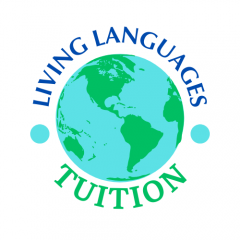1. What is the format of the lessons?
Lessons are tailored to each student’s needs and goals. For French and Spanish lessons, they typically include a mix of speaking, listening, reading, and writing activities. For Latin lessons, I will also spend a significant amount of time on developing students’ grammar, translation and comprehension skills. In most instances, I will provide the necessary learning materials for lessons. On occasion I may request clients purchase textbooks or other materials to support learning. This will be communicated to clients with plenty of notice.
2. Which platforms do you use for online lessons?
I use Google Meet and Google Classroom, sharing all materials digitally. Other platforms can be considered upon request, though it may not always be possible to accommodate these requests.
3. How are payments handled?
Payment must be received for a lesson prior to its commencement and made via online bank transfers only. I reserve the right to refuse tuition if payment has not been received in time. Detailed information about payment procedures will be provided upon enrollment.
4. How can I help my child with their language learning at home, especially if I don’t know the language?
There are several ways you can support your child:
- Encourage regular practice and show interest in their progress.
- Use the vocabulary learning strategies and ‘crib sheets’ I provide.
- Engage with language learning apps and online resources together.
- If your child is at pre-school or in primary school, consider starting with my picture books, Little Linguists’ Library, which are designed for parents and children to learn together from a young age.
5. What are your qualifications and background in teaching?
I am a qualified teacher with a first-class degree in French and Latin from Oxford University. I have been working in education, as a teacher and as a consultant, since 2005 and as a private tutor since 2016. I have an established track record of exam success for my clients. I hold a full DBS check as part of the annual update service and have recent safeguarding training from the Tutors’ Association, of which I am a member.
6. What strategies do you teach to help students become independent learners?
I focus on teaching specific vocabulary learning strategies, including spaced repetition and mnemonic devices. I also provide custom ‘crib sheets’ that summarize key knowledge points, which are invaluable for revision.
7. How can your picture books help with early language learning?
Starting language learning early is crucial. My picture books are designed for children as young as 3 and are a great resource for parents who don’t speak French or Spanish. These books allow you to learn alongside your child, making the process enjoyable and effective for both. For more information on using the books with your child, go to littlelinguistslibrary.com.
